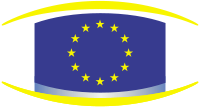Taoiseach
| Taoiseach of Ireland |
|
|---|---|
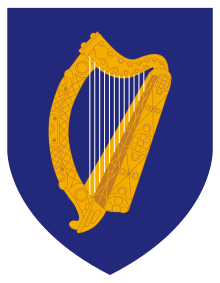 Coat of arms of Ireland |
|
| Residence | Steward's Lodge, Farmleigh[1] |
| Appointer | Mary McAleese as President |
| Term length | General elections are held every five years at a maximum, but may be held sooner. No term limits are imposed on the office. |
| Inaugural holder | Éamon de Valera[2] |
| Formation | 29 December 1937[2] |
| Deputy | Tánaiste |
| Salary | €228,466 |
| Website | www.taoiseach.ie |
| Republic of Ireland |
 This article is part of the series: |
|
|
|
Constitution
Government
Judiciary
Elections
Divisions
Foreign policy
|
|
Other countries · Atlas |
The Taoiseach (pronounced /ˈtiːʃəx/; Irish pronunciation: [t̪ˠiːʃəx]), plural Taoisigh ([t̪ˠiːʃiː] or [t̪ˠiːʃəɟ]), also referred to as An Taoiseach ([ən t̪ˠiːʃəx]),[3] is the head of government of Ireland.
The Taoiseach is appointed by the President upon the nomination of Dáil Éireann (the lower house of the Oireachtas), and must, while he remains in office, retain the support of a majority in the Dáil. The role of Taoiseach is that of a prime minister.[4]
The current Taoiseach is Brian Cowen, TD, leader of the Fianna Fáil party.
Contents |
Overview
Under the Constitution of Ireland the Taoiseach must be appointed from among the members of Dáil Éireann. In the event that the Taoiseach loses the support of a majority in Dáil Éireann, he is not automatically removed from office but, rather, is compelled either to resign or to persuade the President to dissolve the Dáil. The President may refuse to grant a dissolution, and, in effect, force the Taoiseach to resign, but, to date, no president has exercised this prerogative (though the option arose in 1944, twice in 1982 and would have arisen in 1994 had Albert Reynolds chosen, following his Dáil defeat, to seek a dissolution rather than resign). The Taoiseach may lose the support of Dáil Éireann by the passage of a vote of no confidence, the failure of a vote of confidence or, alternatively, the Dáil may refuse supply.[5] In the event of the Taoiseach's resignation, he continues to exercise the duties and functions of his office until the appointment of a successor.
The Taoiseach nominates the remaining members of the Government, who are then, with the consent of the Dáil, appointed by the President. The Taoiseach also has authority to have fellow members of the cabinet dismissed from office. He or she is further responsible for appointing eleven members of the Senate.
Salary
The Taoiseach's salary has been somewhat higher than for leaders in many other countries: €228,466 annually following a recent reduction of 20% on the previous €285,582,[6][7] compared to £142,000 (about €172,164) for the British Prime Minister and €231,000 for the President of France. In October 2007, the Taoiseach was the highest-paid head of government in the OECD countries.[8] However, the remuneration structures for Government of Ireland employees apparently mean that comparison with other countries are not useful and are discouraged by the Review Body on Higher Remuneration in the Public Sector.[9] A proposed increase of €38,000 in 2007, was deferred when Brian Cowen became Taoiseach[10] and in October 2008, the government announced a 10% salary cut for all ministers, including the Taoiseach.[11] However this was a voluntary cut and the salaries remained nominally the same with ministers and Taoiseach essentially refusing 10% of their salary. This courted controversy in December 2009 when a salary cut of 20% was based on the higher figure before the refused amount was deducted.[12] The Taoiseach is also allowed an additional €118,981 in annual expenses.
Residence
In 2008 it was reported that the former Steward's Lodge at Farmleigh adjoining the Phoenix Park would become the official residence of the Taoiseach.[13] The house, which forms part of the Farmleigh estate acquired by the State in 1999 for €29.2m, was renovated at a cost of nearly €600,000 in 2005 by the Office of Public Works. Former Taoiseach Bertie Ahern did not use it as a residence, however the current Taoiseach Brian Cowen, uses it "from time to time".[14]
History
Origins and etymology
The words Taoiseach and Tánaiste (the title of the deputy prime minister) are both from the Irish language and of ancient origin. Though the Taoiseach is described in the Constitution of Ireland as "the head of the Government or Prime Minister",[4] its literal translation is "Chieftain" or "Leader".[15] Some historians suggest that in ancient Ireland (where these terms originate), a taoiseach was a minor king, while a tánaiste was a governor placed in a kingdom whose king had been deposed or, more usually, his heir-apparent. In Scottish Gaelic, tòiseach translates as clan chief and both words originally had similar meaning in the Gaelic languages of Scotland and Ireland. The related Welsh language word tywysog (current meaning "prince" – from tywys, "to lead") appears to have had a similar meaning.
Modern office
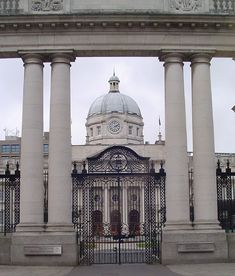
The modern position of Taoiseach was established by the 1937 Constitution of Ireland, to replace the position of President of the Executive Council of the 1922–1937 Irish Free State. The positions of Taoiseach and President of the Executive Council differed in certain fundamental respects. Under the Constitution of the Irish Free State the latter was vested with considerably less power and was largely just the cabinet's presiding officer. For example, the President of the Executive Council could not dismiss a fellow minister. The Free State's cabinet, the Executive Council, had to be disbanded and reformed entirely, in order to remove one of its number. The President of the Executive Council could also not personally seek a dissolution of Dáil Éireann from the head of state, that power belonging collectively to the Executive Council. In contrast, the Taoiseach created in 1937 possesses a much more powerful role. He can both instruct the President to dismiss ministers, and request a parliamentary dissolution on his own initiative.[16]
Historically, where there have been multi-party or coalition governments, the Taoiseach has come from the leader of the largest party in the coalition. One exception to this was John A. Costello, who was not leader of his party, but an agreed choice to head the government, because the other parties refused to accept then Fine Gael leader Richard Mulcahy as Taoiseach.
List of office holders
Main articles: Irish heads of government since 1919, Records of Irish heads of government since 1922
Before the enactment of the 1937 Constitution, the head of government was referred to as the President of the Executive Council. This office was first held by W. T. Cosgrave of Cumann na nGaedhael from 1922–32, and then by Éamon de Valera from 1932–37. By convention Taoisigh are numbered to include Cosgrave,[17][18][19][20] for example Brian Cowen is considered the 12th Taoiseach not the 11th.
President of the Executive Council |
||||||||
| No. | Name (Birth–Death); Constituency |
Portrait | Term of Office | Elected (Dáil) |
Exec. Council |
Party | ||
|---|---|---|---|---|---|---|---|---|
| 1. | W. T. Cosgrave (1880–1965) TD for Carlow–Kilkenny until 1927 TD for Cork Borough from 1927 |
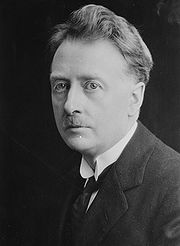 |
6 December 1922 | 9 March 1932 | 1922 ([[Members of the 3rd Dáil|3]]) | [[Government of the 3rd Dáil#1st Executive Council of the Irish Free State|1]] | Cumann na nGaedhael | |
| 1923 ([[Members of the 4th Dáil|4]]) | [[Government of the 4th Dáil|2]] | |||||||
| Jun.1927 ([[Members of the 5th Dáil|5]]) | [[Government of the 5th Dáil|3]] | |||||||
| Sep.1927 ([[Members of the 6th Dáil|6]]) | [[Government of the 6th Dáil#4th Executive Council of the Irish Free State|4]] | |||||||
| [[Government of the 6th Dáil#5th Executive Council of the Irish Free State|5]] | ||||||||
| 2. | Éamon de Valera (1882–1975) TD for Clare |
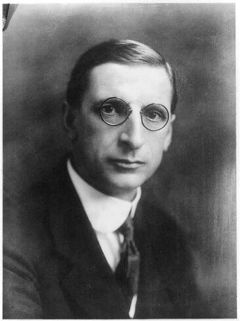 |
9 March 1932 | 29 December 1937 | 1932 ([[Members of the 7th Dáil|7]]) | [[Government of the 7th Dáil|6]] | Fianna Fáil | |
| 1933 ([[Members of the 8th Dáil|8]]) | [[Government of the 8th Dáil|7]] | |||||||
| 1937 ([[Members of the 9th Dáil|9]]) | [[Government of the 9th Dáil#8th Executive Council of the Irish Free State|8]] | |||||||
Taoiseach |
||||||||
| No. | Name (Birth–Death); Constituency |
Portrait | Term of Office | Elected (Dáil) |
Govt. | Party of Taoiseach Other parties in govt. |
||
| 2. | Éamon de Valera (1882–1975) TD for Clare |
 |
29 December 1937 | 18 February 1948 | — | [[Government of the 9th Dáil#1st Government of Ireland|1 Govt.]] | Fianna Fáil | |
| 1938 ([[Members of the 10th Dáil|10]]) | [[Government of the 10th Dáil|2 Govt.]] | |||||||
| 1943 ([[Members of the 12th Dáil|11]]) | [[Government of the 11th Dáil|3 Govt.]] | |||||||
| 1944 ([[Members of the 12th Dáil|12]]) | [[Government of the 12th Dáil|4 Govt.]] | |||||||
| 3. | John A. Costello (1891–1976) TD for Dublin South East |
18 February 1948 | 13 June 1951 | 1948 ([[Members of the 13th Dáil|13]]) | [[Government of the 13th Dáil|5 Govt.]] | Fine Gael with Labour; CnaP; CnaT; National Labour |
||
| (2) | Éamon de Valera (1882–1975) TD for Clare |
 |
13 June 1951 | 2 June 1954 | 1951 ([[Members of the 14th Dáil|14]]) | [[Government of the 16th Dáil|6 Govt.]] | Fianna Fáil | |
| (3) | John A. Costello (1891–1976) TD for Dublin South East |
2 June 1954 | 20 March 1957 | 1954 ([[Members of the 15th Dáil|15]]) | [[Government of the 15th Dáil|7 Govt.]] | Fine Gael with Labour; Clann na Talmhan |
||
| (2) | Éamon de Valera (1882–1975) TD for Clare |
 |
20 March 1957 | 23 June 1959 | 1957 ([[Members of the 16th Dáil|16]]) | [[Government of the 16th Dáil#8th Government of Ireland|8 Govt.]] | Fianna Fáil | |
| 4. | Seán Lemass (1899–1971) TD for Dublin South Central |
 |
23 June 1959 | 10 November 1966 | [[Government of the 16th Dáil#9th Government of Ireland|9 Govt.]] | Fianna Fáil | ||
| 1961 ([[Members of the 17th Dáil|17]]) | [[Government of the 17th Dáil|10 Govt.]] | |||||||
| 1965 ([[Members of the 18th Dáil|18]]) | [[Government of the 18th Dáil#11th Government of Ireland|11 Govt.]] | |||||||
| 5. | Jack Lynch (1917–1999) TD for Cork Borough until 1969 TD for Cork City North West from 1969 |
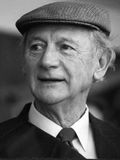 |
10 November 1966 | 14 March 1973 | [[Government of the 18th Dáil#12th Government of Ireland|12 Govt.]] | Fianna Fáil | ||
| 1969 ([[Members of the 19th Dáil|19]]) | [[Government of the 19th Dáil|13 Govt.]] | |||||||
| 6. | Liam Cosgrave (1920– ) TD for Dún Laoghaire and Rathdown |
14 March 1973 | 5 July 1977 | 1973 ([[Members of the 20th Dáil|20]]) | [[Government of the 20th Dáil|14 Govt.]] | Fine Gael with Labour |
||
| (5) | Jack Lynch (1917–1999) TD for Cork City |
 |
5 July 1977 | 11 December 1979 | 1977 ([[Members of the 21st Dáil|21]]) | [[Government of the 21st Dáil#15th Government of Ireland|15 Govt.]] | Fianna Fáil | |
| 7. | Charles Haughey (1925–2006) TD for Dublin Artane |
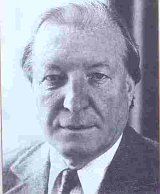 |
11 December 1979 | 30 June 1981 | [[Government of the 21st Dáil#16th Government of Ireland|16 Govt.]] | Fianna Fáil | ||
| 8. | Garret FitzGerald (1926– ) TD for Dublin South East |
 |
30 June 1981 | 9 March 1982 | 1981 ([[Members of the 22nd Dáil|22]]) | [[Government of the 22nd Dáil|17 Govt.]] | Fine Gael with Labour |
|
| (7) | Charles Haughey (1925–2006) TD for Dublin North Central |
 |
9 March 1982 | 14 December 1982 | Feb.1982 ([[Members of the 23rd Dáil|23]]) | [[Government of the 23rd Dáil|18 Govt.]] | Fianna Fáil | |
| (8) | Garret FitzGerald (1926– ) TD for Dublin South East |
 |
14 December 1982 | 10 March 1987 | Nov.1982 ([[Members of the 24th Dáil|24]]) | [[Government of the 24th Dáil|19 Govt.]] | Fine Gael with Labour |
|
| (7) | Charles Haughey (1925–2006) TD for Dublin North Central |
 |
10 March 1987 | 11 February 1992 | 1987 ([[Members of the 25th Dáil|25]]) | [[Government of the 25th Dáil|20 Govt.]] | Fianna Fáil with PD |
|
| 1989 ([[Members of the 26th Dáil|26]]) | [[Government of the 26th Dáil#21st Government of Ireland|21 Govt.]] | |||||||
| 9. | Albert Reynolds (1932– ) TD for Longford–Roscommon |
 |
11 February 1992 | 15 December 1994 | [[Government of the 26th Dáil#22nd Government of Ireland|22 Govt.]] | Fianna Fáil with PD |
||
| 1992 ([[Members of the 27th Dáil|27]]) | [[Government of the 27th Dáil#23rd Government of Ireland|23 Govt.]] | Fianna Fáil with Labour |
||||||
| 10. | John Bruton (1947– ) TD for Meath |
 |
15 December 1994 | 26 June 1997 | [[Government of the 27th Dáil#24th Government of Ireland|24 Govt.]] | Fine Gael with Labour; Dem.Left |
||
| 11. | Bertie Ahern (1951– ) TD for Dublin Central |
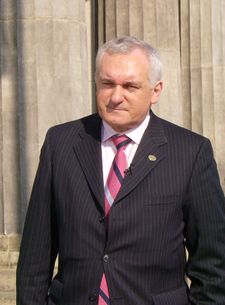 |
26 June 1997 | 6 May 2008 | 1997 ([[Members of the 28th Dáil|28]]) | [[Government of the 28th Dáil|25 Govt.]] | Fianna Fáil with PDs; Green from 2007 |
|
| 2002 ([[Members of the 29th Dáil|29]]) | [[Government of the 29th Dáil|26 Govt.]] | |||||||
| 2007 ([[Members of the 30th Dáil|30]]) | [[Government of the 30th Dáil#27th Government of Ireland|27 Govt.]] | |||||||
| 12. | Brian Cowen (1960– ) TD for Laois–Offaly |
 |
7 May 2008 | Incumbent | [[Government of the 30th Dáil#28th Government of Ireland|28 Govt.]] | Fianna Fáil with Green; PDs until 2009 |
||
Living former Taoisigh
- Liam Cosgrave
- Garret FitzGerald
- Albert Reynolds
- John Bruton
- Bertie Ahern
See also
- Department of the Taoiseach
- Politics of the Republic of Ireland
- So You Want To Be Taoiseach
References and notes
- ↑ It is not used on a full time basis.
- ↑ 2.0 2.1 Before the enactment of the 1937 Constitution of Ireland, the head of government was referred to as the President of the Executive Council. This office was first held by W. T. Cosgrave from 1922–32, and then by Éamon de Valera from 1932–37.
- ↑ Retaining the Irish definite article an /ən/ instead of English the.
- ↑ 4.0 4.1 Article 13.1.1° and Article 28.5.1° of the Constitution of Ireland. The latter provision reads: "The head of the Government, or Prime Minister, shall be called, and is in this Constitution referred to as, the Taoiseach." [1]
- ↑ One example of the Dáil refusing supply occurred in January 1982 when the then Fine Gael – Labour Party coalition government of Garret FitzGerald lost a vote on the budget. [2]
- ↑ "Taoiseach to take €28,500 pay cut". Irish Times. 29 December 2009. http://www.irishexaminer.com/ireland/politics/taoiseach-to-take-euro28500-pay-cut-107545.html. Retrieved 10 December 2009.
- ↑ "Cabinet protects pensions but workers will pay price". Irish Independent. 16 January 2009. http://www.independent.ie/national-news/cabinet-protects-pensions-but-workers-will-pay-price-1603935.html. Retrieved 29 January 2009.
- ↑ Sharrock, David (29 October 2007). "Have you ever wondered why Bertie Ahern always looks so cheerful?". London: The Sunday Times. http://www.timesonline.co.uk/tol/news/world/europe/article2759740.ece. Retrieved 24 May 2010.
- ↑ "Report No. 42". Review Body on Higher Remuneration in the Public Sector. 14 September 2007. http://www.reviewbody.gov.ie/publications/highrem42.pdf. Retrieved 10 May 2008.
- ↑ "Taoiseach to receive €38k pay rise". RTÉ News. 25 October 2007. http://www.rte.ie/news/2007/1025/politics.html.
- ↑ "Sharp exchanges in Dáil over Budget". RTÉ News. 15 October 2008. http://www.rte.ie/news/2008/1015/budget.html. Retrieved 29 January 2009.
- ↑ "Opposition says Lenihan's salary cuts do not add up". Irish Independent. 10 December 2009. http://www.independent.ie/national-news/budget/comment-reaction/opposition-says-lenihans-salary-cuts-do-not-add-up-1969628.html. Retrieved 29 December 2009.
- ↑ "Opulent Phoenix Park lodge is set to become 'Fortress Cowen'". Irish Independent. 18 May 2008. http://www.independent.ie/national-news/opulent-phoenix-park-lodge-is--set-to-become-fortress-cowen-1378987.html. Retrieved 18 May 2008.
- ↑ "Cowen questioned on use of Farmleigh". The Irish Times. 29 January 2009. http://www.irishtimes.com/newspaper/ireland/2009/0129/1232923372778.html. Retrieved 29 January 2009.
- ↑ "Youth Zone – Frequently Asked Questions". Department of the Taoiseach. http://www.taoiseach.ie/eng/Youth_Zone/FAQ/. Retrieved 23 June 2010.
- ↑ Among the most famous ministerial dismissals have been those of Charles Haughey and Neil Blaney during the Arms Crisis in 1970, Brian Lenihan in 1990 and Albert Reynolds, Pádraig Flynn and Máire Geoghegan-Quinn in 1991.
- ↑ "Coughlan new Tánaiste in Cowen Cabinet". The Irish Times. 17 May 2008. http://www.irishtimes.com/newspaper/breaking/2008/0507/breaking7.htm. Retrieved 17 May 2008.
- ↑ "Taoiseach reveals new front bench". RTÉ News. 7 May 2008. http://www.rte.ie/news/2008/0507/fiannafail.html. Retrieved 17 May 2008.
- ↑ "Cowen confirmed as Taoiseach". BreakingNews.ie. 7 May 2008. http://www.breakingnews.ie/ireland/mhgbausnidau/. Retrieved 17 May 2008.
- ↑ "Former Taoisigh". Department of the Taoiseach. http://www.taoiseach.ie/eng/Taoiseach_and_Government/History_of_Government/Former_Taoisigh/. Retrieved 23 June 2010.
Further reading
The book Chairman or Chief: The Role of the Taoiseach in Irish Government (1971) by Brian Farrell provides a good overview of the conflicting roles for the Taoiseach. Though long out of print, it may still be available in libraries or from AbeBooks. Biographies are also available of de Valera, Lemass, Lynch, Cosgrave, FitzGerald, Haughey, Reynolds and Ahern. FitzGerald wrote an autobiography, while an authorised biography was produced of de Valera.
Some biographies of former Taoisigh and Presidents of the Executive Council
- Tim Pat Coogan, Éamon de Valera
- John Horgan, Seán Lemass
- Brian Farrell, Seán Lemass
- T.P. O'Mahony, Jack Lynch: A Biography
- T. Ryle Dwyer, Nice Fellow: A Biography of Jack Lynch
- Stephen Collins, The Cosgrave legacy
- Garret FitzGerald, All in a Life
- Raymond Smith, Garret: The Enigma
- T.Ryle Dwyer, Short Fellow: A Biography of Charles Haughey
- Martin Mansergh, Spirit of the Nation: The Collected Speeches of Haughey
- Joe Joyce & Peter Murtagh The Boss: Charles Haughey in Government
- Tim Ryan, Albert Reynolds: The Longford Leader
External links
|
|||||||||||||||||||||||
|
|||||||||||
|
||||||||
|
|||||||||||||||
|
|||||
